Iron chelation inhibits the development of pulmonary vascular remodeling
- PMID: 22974762
- PMCID: PMC3472156
- DOI: 10.1016/j.freeradbiomed.2012.08.576
Iron chelation inhibits the development of pulmonary vascular remodeling
Abstract
Reactive oxygen species (ROS) have been implicated in the pathogenesis of pulmonary hypertension. Because iron is an important regulator of ROS biology, this study examined the effects of iron chelation on the development of pulmonary vascular remodeling. The administration of an iron chelator, deferoxamine, to rats prevented chronic hypoxia-induced pulmonary hypertension and pulmonary vascular remodeling. Various iron chelators inhibited the growth of cultured pulmonary artery smooth muscle cells. Protein carbonylation, an important iron-dependent biological event, was promoted in association with pulmonary vascular remodeling and cell growth. A proteomic approach identified that Rho GDP-dissociation inhibitor (a negative regulator of RhoA) is carbonylated. In human plasma, the protein carbonyl content was significantly higher in patients with idiopathic pulmonary arterial hypertension than in healthy controls. These results suggest that iron plays an important role in the ROS-dependent mechanism underlying the development of pulmonary hypertension.
Copyright © 2012 Elsevier Inc. All rights reserved.
Figures
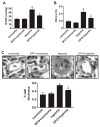
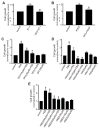
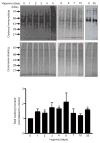

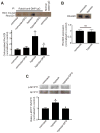
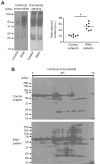
Similar articles
-
Reoxygenation Reverses Hypoxic Pulmonary Arterial Remodeling by Inducing Smooth Muscle Cell Apoptosis via Reactive Oxygen Species-Mediated Mitochondrial Dysfunction.J Am Heart Assoc. 2017 Jun 23;6(6):e005602. doi: 10.1161/JAHA.117.005602. J Am Heart Assoc. 2017. PMID: 28645933 Free PMC article.
-
Bone morphogenic protein-4-induced oxidant signaling via protein carbonylation for endothelial dysfunction.Free Radic Biol Med. 2014 Oct;75:178-90. doi: 10.1016/j.freeradbiomed.2014.07.035. Epub 2014 Aug 1. Free Radic Biol Med. 2014. PMID: 25091895
-
Chrysin Alleviates Chronic Hypoxia-Induced Pulmonary Hypertension by Reducing Intracellular Calcium Concentration in Pulmonary Arterial Smooth Muscle Cells.J Cardiovasc Pharmacol. 2019 Nov;74(5):426-435. doi: 10.1097/FJC.0000000000000726. J Cardiovasc Pharmacol. 2019. PMID: 31725079
-
LncRNA-SMILR modulates RhoA/ROCK signaling by targeting miR-141 to regulate vascular remodeling in pulmonary arterial hypertension.Am J Physiol Heart Circ Physiol. 2020 Aug 1;319(2):H377-H391. doi: 10.1152/ajpheart.00717.2019. Epub 2020 Jun 19. Am J Physiol Heart Circ Physiol. 2020. PMID: 32559140
-
Novel strategy for treatment of pulmonary arterial hypertension: enhancement of apoptosis.Lung. 2010 Jun;188(3):179-89. doi: 10.1007/s00408-010-9233-8. Epub 2010 Mar 6. Lung. 2010. PMID: 20213196 Review.
Cited by
-
Pulmonary Arterial Hypertension: Iron Matters.Front Physiol. 2018 May 31;9:641. doi: 10.3389/fphys.2018.00641. eCollection 2018. Front Physiol. 2018. PMID: 29904352 Free PMC article. Review.
-
Endothelin-1 depletion of cartilage oligomeric matrix protein modulates pulmonary artery superoxide and iron metabolism-associated mitochondrial heme biosynthesis.Am J Physiol Lung Cell Mol Physiol. 2022 Oct 1;323(4):L400-L409. doi: 10.1152/ajplung.00534.2020. Epub 2022 Aug 9. Am J Physiol Lung Cell Mol Physiol. 2022. PMID: 35943724 Free PMC article.
-
Potential Roles of Metals in the Pathogenesis of Pulmonary and Systemic Hypertension.Int J Biol Sci. 2023 Sep 25;19(16):5036-5054. doi: 10.7150/ijbs.85590. eCollection 2023. Int J Biol Sci. 2023. PMID: 37928257 Free PMC article. Review.
-
The Hepcidin/Ferroportin axis modulates proliferation of pulmonary artery smooth muscle cells.Sci Rep. 2018 Aug 28;8(1):12972. doi: 10.1038/s41598-018-31095-0. Sci Rep. 2018. PMID: 30154413 Free PMC article.
-
Mitochondrial Metabolism, Redox, and Calcium Homeostasis in Pulmonary Arterial Hypertension.Biomedicines. 2022 Feb 1;10(2):341. doi: 10.3390/biomedicines10020341. Biomedicines. 2022. PMID: 35203550 Free PMC article. Review.
References
-
- Runo JR, Loyd JE. Primary pulmonary hypertension. Lancet. 2003;361:1533–1544. - PubMed
-
- Suzuki YJ, Forman HJ, Sevanian A. Oxidants as stimulators of signal transduction. Free Radic Biol Med. 1997;22:269–285. - PubMed
-
- Lee SL, Wang WW, Fanburg BL. Superoxide as an intermediate signal for serotonin-induced mitogenesis. Free Radic Biol Med. 1998;24:855–858. - PubMed
-
- Lee SL, Simon AR, Wang WW, Fanburg BL. H2O2 signals 5-HT-induced ERK MAP kinase activation and mitogenesis of smooth muscle cells. Am J Physiol. 2001;281:L646–L652. - PubMed
-
- Wedgwood S, Dettman RW, Black SM. ET-1 stimulates pulmonary arterial smooth muscle cell proliferation via induction of reactive oxygen species. Am J Physiol Lung Cell Mol Physiol. 2001;281:L1058–L1067. - PubMed
Publication types
MeSH terms
Substances
Grants and funding
LinkOut - more resources
Full Text Sources

